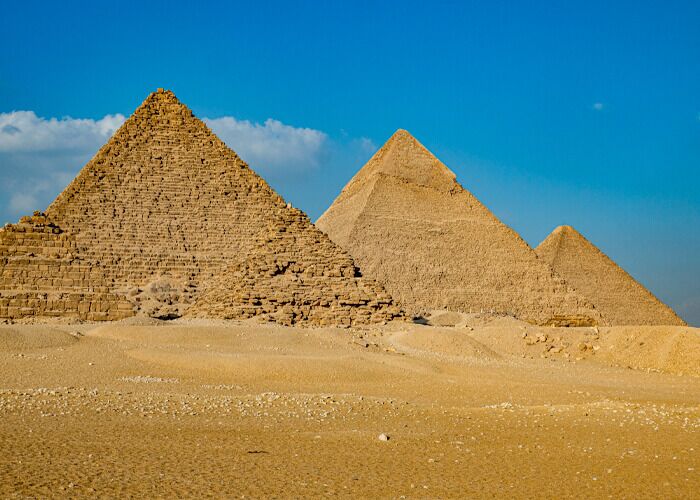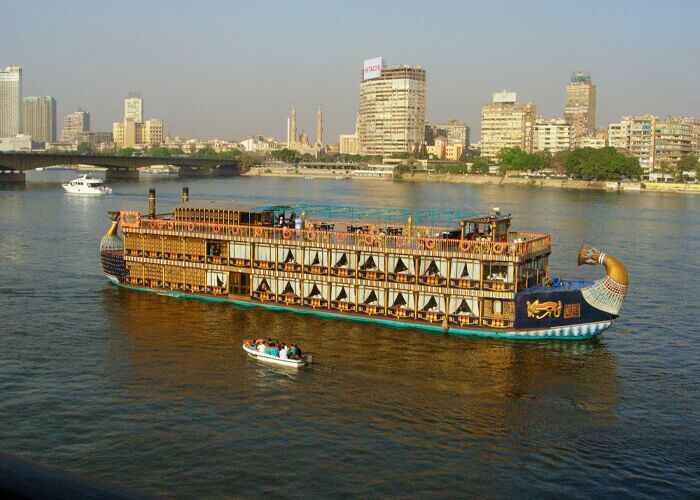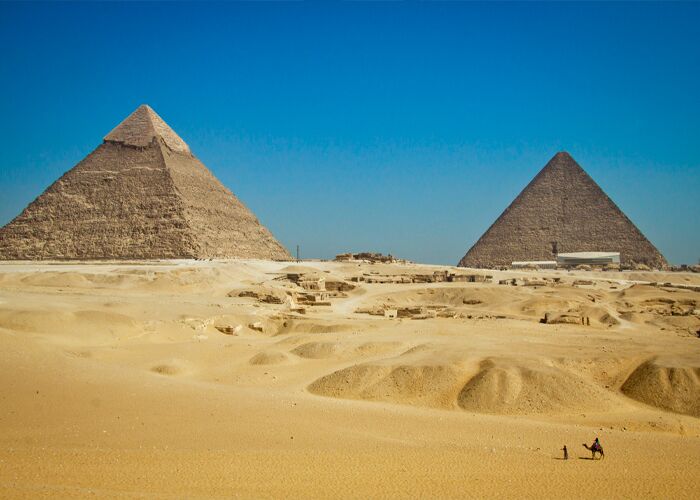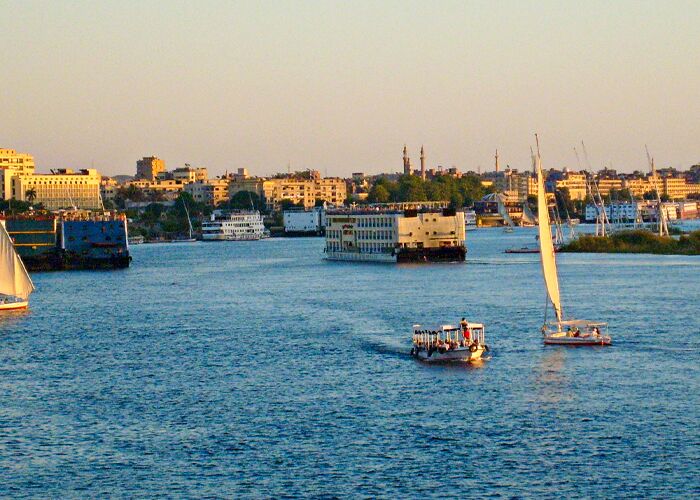What to Do and What to Avoid in Egypt
The monuments are not for touching, scraping, or sitting on. Archaeological sites are part of our collective cultural legacy, and as such, they should be preserved and protected.
Make sure you’re dressed appropriately. Ladies should avoid wearing shorts or exposing their shoulders in cities, but there is no official dress code. This is particularly true while visiting places of worship, such as churches and mosques, where visitors are expected to dress modestly.
Keep hydrated by drinking a lot of water. To avoid dehydration, drink lots of water and use sunscreen.
Is there any Egyptian cash in your possession, sir?
Most hotels and big businesses in tourist areas accept credit cards and foreign currencies, but smaller restaurants and shops are less likely to do so, especially if you go into the desert or away from the main tourist towns. Cash payments are expected from souk vendors.
Remember to bring home some souvenirs. In Egypt, you may pick from a broad variety of souvenirs to bring back with you as a reminder of your stay in the country. Beautiful souks and a multitude of Egyptian handicrafts, such as blown glass carpets, perfumes and alabaster as well as alabaster, basket ceramics, textiles, and jewelry, depict the culture of the different sites along the Nile. Anything deemed ancient, on the other hand, should not be attempted to be stolen.
Legally, this is not allowed to be done.
Don’ts
Remember to pack your camera, or you’ll miss the opportunity to create lasting moments with your family and friends.
It is only advisable to go on a desert excursion with the help of experienced guides and drivers.
Before booking a Nile cruise, make sure to verify the schedule for the Esna Lock.
Don’t forget to check out the historical sites along the Nile’s length, as well as the many musical and light acts.
The most important thing is to have fun and return to Egypt as soon as you can!
INITIAL APPROACH AND DISTANCE
Visitors to Egypt will require a one-time visa to enter the country.
90 days from the date of issuance are included in the validity of the visa.
A multiple-visit visa is the most cost-effective option if you want to go into and out of Egypt at the same time. A visa application is a very straightforward procedure.
The Egyptian consulates across the world may help you get this in beforehand, or you can get it when you arrive at Cairo or Luxor airports.
To enter the nation, all visitors must have a passport that is valid for at least the next six months.
Bringing alcoholic drinks and cigarettes into Egypt is subject to stringent customs procedures, as it is in any country.
These items should be purchased at the airport in order to avoid any misunderstandings. Attempting to transport antiques out of the nation is strictly forbidden.
Transportation in Egypt
Because Egypt is so huge, flying is the most convenient means of transportation for travelers who only have a limited amount of time to explore everything that the country has to offer.
Additionally, there are less costly, but more time-consuming options including long-distance buses and trains.
Taxis and minibuses are the most common modes of transportation in cities, however car rentals are also an option.
For those on a tight schedule who want to see as much as possible in a short amount of time, a day rental of a car with a guide is an excellent alternative.
When venturing into the desert, it is vital to have a guide with you in order to avoid getting lost.
Using Cairo’s underground rail system, which is also accessible, is a sensible way to move about the city.
CLIMATE
The Nile Valley stretches about 1532 kilometers, thus the weather may vary greatly from Alexandria, on the coast in the north, all the way down the river to Luxor, Aswan, and Abu Simbel in the south. Alexandria is located at the mouth of the Nile.
In comparison to desert parts, the Nile Valley has a considerably milder climate, with more sunshine and fewer rainy days, although it is still much warmer than the rest of Egypt.
Mid-April through May, September through October, or November through December are the best times to visit since the weather is more pleasant for sightseeing and city exploration.
July and August are the hottest months of the year when the sun is at its most powerful.
When it’s hot in Cairo, it’s between 95 and 107.6 Fahrenheit, while it’s 30 to 40 Fahrenheit in Luxor and 31 degrees Fahrenheit in Aswan. In Cairo, temperatures vary from 95 to 107.6 Fahrenheit, and when it’s hot in Luxor, it’s between 30 and 40 Fahrenheit (107.6 and 107.6 degrees Fahrenheit).
LANGUAGE
Many additional languages are spoken in Egypt’s tourist areas, although Arabic is the country’s official language.
HEALTH
Traveling to Egypt does not need any vaccinations.
Wearing light cotton clothing, a hat, and drinking enough of water will help avoid sunburn and dehydration.
Although Egyptian medical facilities are generally of excellent quality, it is still a good idea to get travel insurance before departing.
SPORTS
When compared to the Red Sea resorts of Hurghada, El Gouna, Marsa Alam, and Dahab on the Sinai Peninsula, the Nile Valley is noted for its balloon flights over the Valley of the Kings, its great golf courses, especially near Cairo and Luxor, and its felucca sailing.
Visitors may go horseback riding, camel riding, or go on guided hikes and safaris, while those who like to rest can visit a number of top-notch spas in the region.
COMMUNICATIONS
Egyptian hotels, businesses, and internet cafes are all equipped with wi-fi, making it easy to go online.
Wifi – Wimax wireless internet is available across Egypt’s most famous tourist locations, including Luxor and the Valley of the Kings.
Tourists should have minimal problem finding public phones that take credit cards because of the effectiveness of the telephone system.
To make and receive calls on your mobile phone, you may acquire guest mobile cards.
Half-booths made famous by one of the country’s leading telecom providers, Mendel’s, are easy to spot.
Card denominations of 10 and 30 may be purchased at most newspaper kiosks and other outlets that have the Menatel insignia.
You may send your letter from the comfort of your hotel or a post office. The post office is closed on Fridays.
MONEY
The official currency of Egypt is the Egyptian pound, which is divided into 100 piasters.
There are ATMs in most major cities and villages, making it easy to get cash in most scenarios.
Credit cards, such as Visa and Mastercard, traveler’s cheques, and various foreign currencies, such as the euro, pound sterling, and dollar are often accepted for payment by big hotels and businesses. The Egyptian pound is the only currency accepted in most places if you go from the norm.
ELECTRICITY, TIME, AND DATE.
Except during the beginning and end of May and September, when Egypt is three hours ahead of GMT until the beginning or conclusion of British Summer Time, Egypt is always two hours ahead of GMT.
In Egypt, 220 volts is the standard voltage, and two-pin European-style sockets are used.
An adapter is an excellent option if you want to use personal electronics, such as mobile phone chargers, while on vacation.
For the general public, below are the business hours and holiday schedules.
Banks and government offices are typically open from 9 a.m. to 2 p.m., Monday through Friday, except on holidays and weekends.
With the exception of Sundays, most businesses remain open from ten o’clock in the morning until ten o’clock at night, seven days a week. In retail malls and during Ramadan, these times may be different.
During the summer, certain historic sites and museums stay open until 6 p.m., although most are open daily from 9 a.m. to 5 p.m.
Egypt as a vacation spot
Coptic Christmas will be celebrated on the 7th of January.
Every year, three major holidays are observed: May 1 is Labor Day, July 23 is Revolutionary War Day, and October 6 is Armed Forces Day.
There are a variety of celebrations for both the Islamic New Year and Ramadan in the Muslim community each year.
Recommendations-based tours
To go to the Pyramids and the Nile, you’ll pay $1257.
Hurghada-to-Luxor day travel prices start at $119. Starting at $85 per person, you may take a diving excursion to Ras Mohamed.




